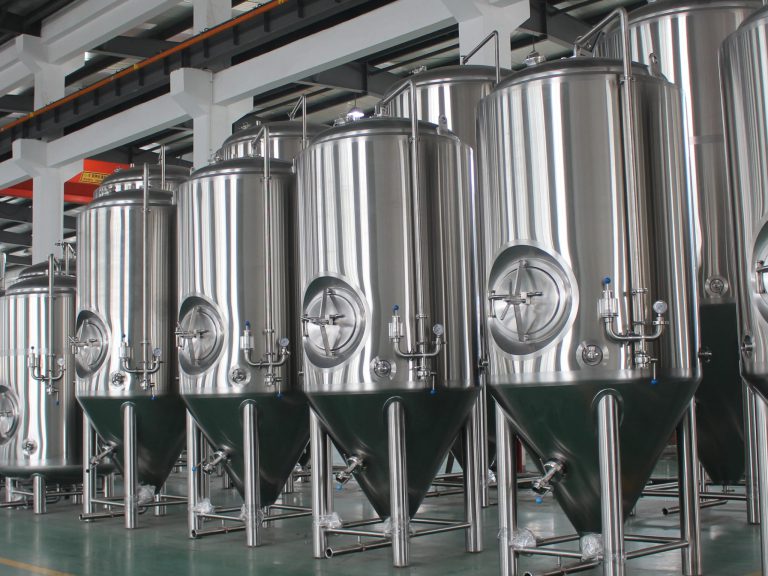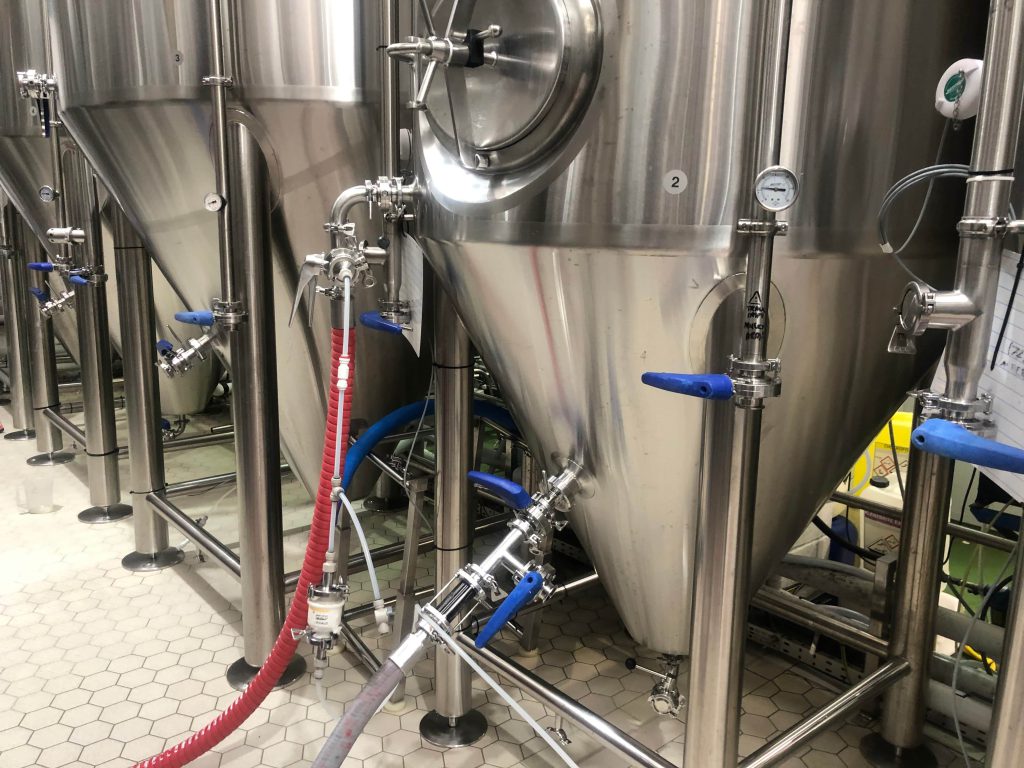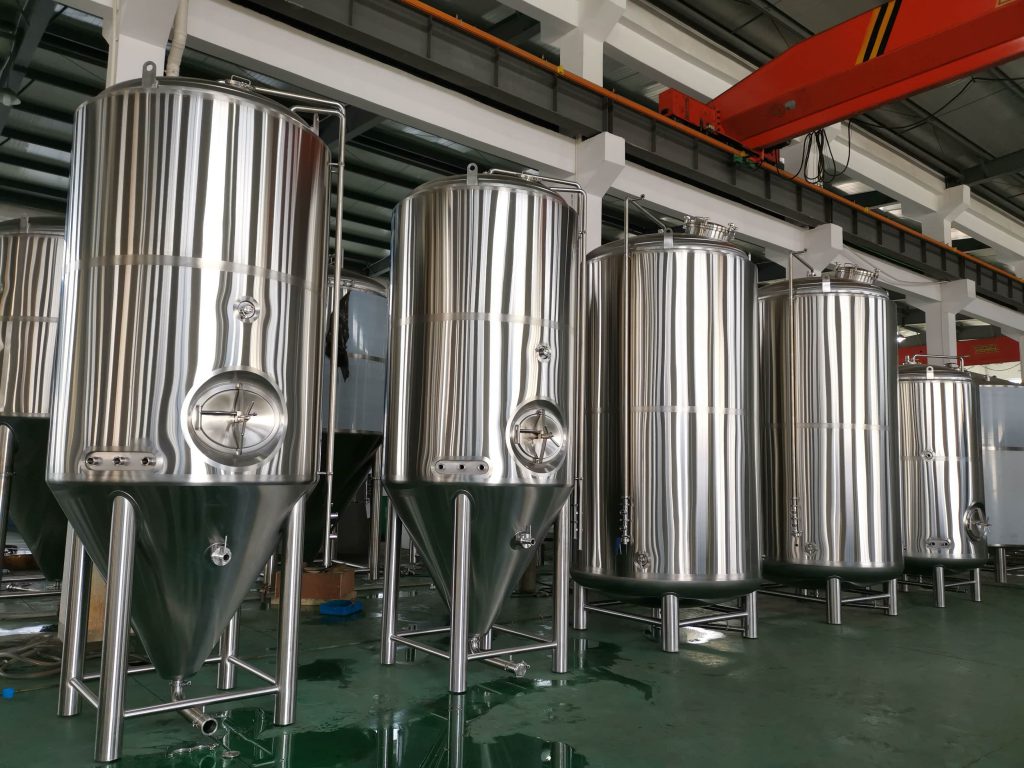Introdução

In the realm of brewing, the choice of fermentation vessels is pivotal to the quality and consistency of the final product. Among these vessels, large fermentation vessels stand out for their capacity to influence fermentation dynamics and overall beer quality. This article explores in depth the significance of large fermentation vessels, examining their impact on the brewing process and the characteristics of the beer they produce.
Importância de Large Fermentation Vessels
Large fermentation vessels play a crucial role in modern brewing practices due to several key advantages they offer:
Controle de fermentação aprimorado
One of the primary benefits of large fermentation vessels is the enhanced control they provide over fermentation conditions. With greater volume, these vessels have more thermal mass, which helps stabilize temperatures during fermentation. This stability is critical for yeast health and activity, ensuring a consistent fermentation process. Brewers can manipulate temperature profiles more effectively, either by direct cooling or insulation techniques, to achieve desired flavor profiles and fermentation kinetics.
Scalability and Efficiency
The scalability of large fermentation vessels allows breweries to increase production volumes without compromising on quality. Larger batches reduce the per-unit cost of production through economies of scale, making them economically advantageous for breweries aiming to meet growing demand. Moreover, larger vessels minimize labor and cleaning efforts per batch compared to smaller vessels, contributing to overall operational efficiency.
Improved Flavor Development
The size of fermentation vessels significantly influences yeast behavior and the production of flavor-active compounds during fermentation. Large vessels provide more space for yeast propagation and reduce the risk of stress-induced off-flavors, resulting in cleaner and more refined beer flavors. Additionally, the slower fermentation kinetics in larger vessels can promote smoother and more complex flavor profiles by allowing more gradual yeast metabolism and flavor development.
Understanding Fermentation Dynamics
Fermentation dynamics vary between small and large vessels due to differences in scale and surface area-to-volume ratios. The following table compares key fermentation parameters:
| Parâmetro | Small Vessels | Large Vessels |
|---|---|---|
| Controle de temperatura | Challenging due to smaller thermal mass | Easier to maintain stable temperatures |
| Propagação de levedura | Limited space for yeast growth and propagation | Ample space for yeast propagation |
| Oxygenation | Requires frequent monitoring and adjustment | Requires less frequent monitoring and adjustment |
| Fermentation Rate | Faster due to increased surface area-to-volume | Generally slower due to larger volume |
These differences highlight the importance of adapting fermentation techniques and equipment to suit the scale of production and desired beer characteristics.
Benefits for Craft Brewers
Craft brewers, in particular, derive significant advantages from using large fermentation vessels:
Experimentation and Innovation
Large vessels enable craft brewers to experiment with diverse ingredients and fermentation techniques on a larger scale. This freedom fosters innovation and creativity, allowing brewers to develop unique beer styles and flavors that resonate with consumers seeking new taste experiences.
Consistência e Qualidade
Maintaining consistent beer quality is crucial for craft brewers to build and sustain a loyal customer base. Large fermentation vessels facilitate batch-to-batch consistency by minimizing variations in fermentation conditions and yeast performance. This reliability enhances the brand reputation of craft breweries known for their dedication to high-quality products.
Eficiência de custos

Despite higher initial investment costs, large fermentation vessels offer long-term financial benefits through improved efficiency and economies of scale. Breweries can achieve higher production volumes with reduced per-unit costs, making large vessels a strategic investment for growth-oriented craft brewers.
Conclusão
Large fermentation vessels are indispensable tools in the brewing industry, influencing everything from fermentation kinetics to final flavor profiles. Their ability to provide superior fermentation control, scalability, and consistency makes them essential for both commercial breweries and craft brewers striving to deliver exceptional beer to consumers. By harnessing the advantages of large vessels effectively, breweries can elevate their production capabilities and contribute to the diverse and dynamic world of craft beer.
Perguntas frequentes
Q: What size qualifies as a large fermentation vessel?
A: In the brewing industry, vessels with capacities exceeding 1000 liters are typically considered large. However, definitions may vary based on brewery size and production scale.
Q: How do large vessels affect beer flavor?
A: Large fermentation vessels promote cleaner flavors by allowing yeast to ferment more comfortably, resulting in fewer stress-related off-flavors and smoother beer profiles.
Q: Are large vessels suitable for all types of beer?
A: While versatile, large vessels may require adjustments in fermentation techniques for certain beer styles that benefit from specific conditions provided by smaller vessels.
Q: What are the maintenance requirements for large fermentation vessels?
A: Regular cleaning, sanitation, and monitoring of temperature and pressure are essential to ensure optimal vessel performance and uphold beer quality standards.

